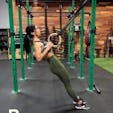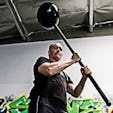Before getting to the main point of this article, I would like to identify two different groups that may want to get their foot in the door of the art of Capoeira.
The first group is the Capoeira enthusiasts, these are the ones that are passionate about the art and want to get started. The second is various fitness and movement practitioners who would like to enrich their world and experiment with different types of movement, perhaps to adopt a few tools to complete their own practice, or acquire tools, methods, and a different perspective for their instructional tool kit to use.
Both of these groups of people will be engaging in capoeira for different reasons, and their individual progress should be made different to efficiently accomplish their goals.
Why Learn Capoeira Moves?
Capoeira touches many fields of fitness, skill work, and movement quality that could be distilled for the purposes of the second group, without the actual practice of the Capoeira basics, which are required for becoming a legitimate practitioner of the art form and body language.
Qualities that can be found in the art are active flexibility, balance positions and transitions, strength and mobility of posterior kinetic chain, explosive strength, tactical movement, dexterity, agility, relative strength, body control, rhythm, interaction on many levels, and expression.
The art could be used to develops various types of endurance and coordination. There is a wide range of topics that could serve the interest of the general crowd. I will simplify the direction of this article and address the first group with reference to the second group as well.
Capoeira Moves #1: Ginga
First move that is usually practiced by the beginner Capoeira practitioner is the ‘Ginga.’ This move is a dynamic combination of partial range Squat and Lunge. For various purposes the movement can be wider and deeper or practiced in different ways. This move usually first challenges coordination. At that level, the rest of Capoeira movements are usually rather confusing. After a few sessions the ‘Ginga’ gets better understood and performed, at that point lots of the capoeira foot work is made easier as well.
Capoeira Moves #2: Spinning Kicks
The second thing to learn is the spinning kicks. Those are movements that help us move around inside the Capoeira circle, as well as create a fluid interaction with a partner. The most basic ones are:
Meia lua de frente
Meia lua de compas
Armada
Queixada
Capoeira Movement #3: Escapes
The third category of moves are the Escapes. Similar to boxing, we use dodges, to which we call escapes or in Portuguese: “Esquivas.” Escapes are what makes the capoeirista different then most other martial arts. A persons ability and quality of escaping could determine his Capoeira proficiency, and allow him to play an inside game, which is considered the more interesting form of interaction. While every Capoeira move could be a form of attack or escape, here are a few of the more basic escapes that are good to start with:
Capoeira Movement #4: Floor Transitioning
The forth category would be floor transitioning. From the most basic form of traveling the floor, allowing oneself to be at different places in relation to his or her partner, and the ability to move in all directions from any position. These qualities in the more advanced form could also serve as transitions between various acrobatics, keeping the momentum of moves, and translating them into further ones. At higher levels, the quality of the balance shifts between the four limbs increases, and the movement becomes more supple and fluid. Here are the basic floor transitions:
Capoeira Movement #5: Frontal Kicks
The last category is more efficient forms of attack, the frontal kicks. Those are harder to anticipate in a real fight situation, though it could cause a practitioner in the early stages to lose his flow, and use them in the context of eastern martial arts. It could be argued if these could be as important as learning take downs and counter take downs, but basically this is where the ‘bite’ should be encountered as to make the playful capoeira game more ‘real’.
Where are the Acrobatics?!?
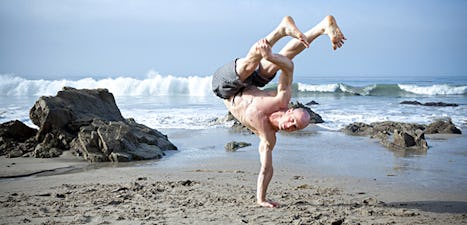 You might notice that I haven’t included any acrobatics in these five categories; the reason is that acrobatics are considered one of the least important movements when teaching a Capoeirista to communicate with his/her body. They are never a requirement for anything in the art. They are a very exciting part of capoeira and could be an entire art by themselves, however, acrobatics are considered the least Capoeira has to contribute to a person. Acrobatics also tend to intimidate many beginner practitioners. Keep in mind that for the serious Capoeirista, learning the music is by far more important than acrobatics.
You might notice that I haven’t included any acrobatics in these five categories; the reason is that acrobatics are considered one of the least important movements when teaching a Capoeirista to communicate with his/her body. They are never a requirement for anything in the art. They are a very exciting part of capoeira and could be an entire art by themselves, however, acrobatics are considered the least Capoeira has to contribute to a person. Acrobatics also tend to intimidate many beginner practitioners. Keep in mind that for the serious Capoeirista, learning the music is by far more important than acrobatics.
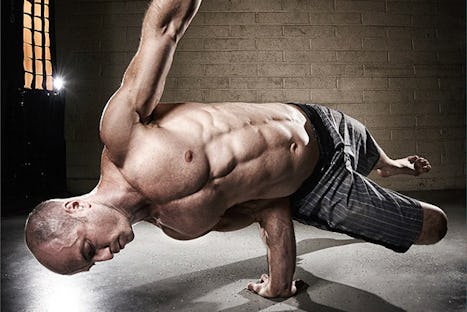
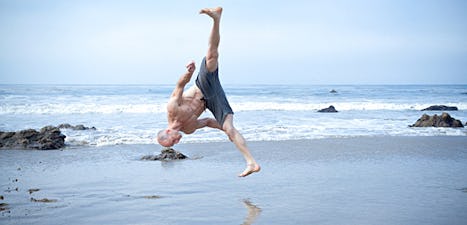
)


